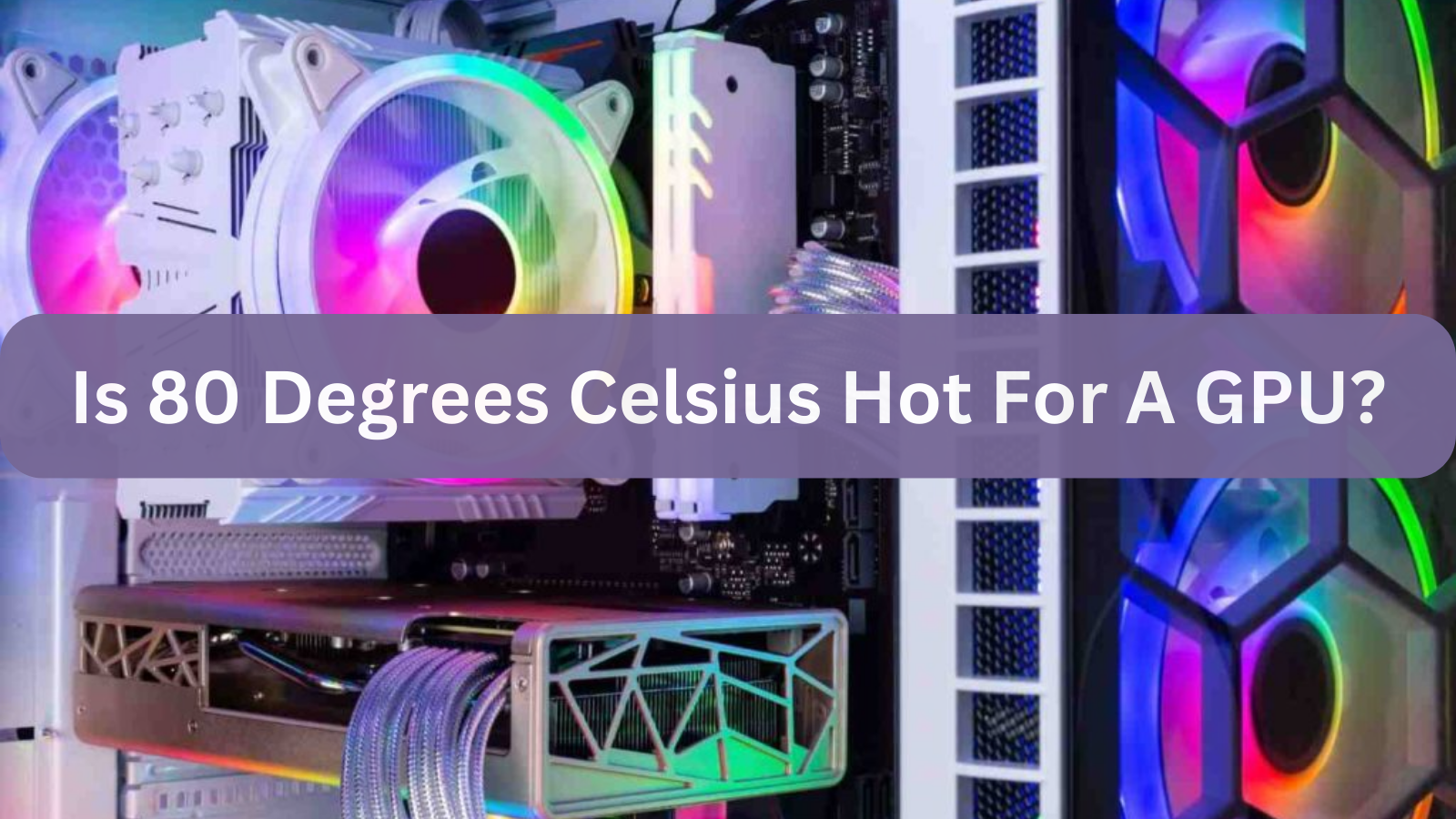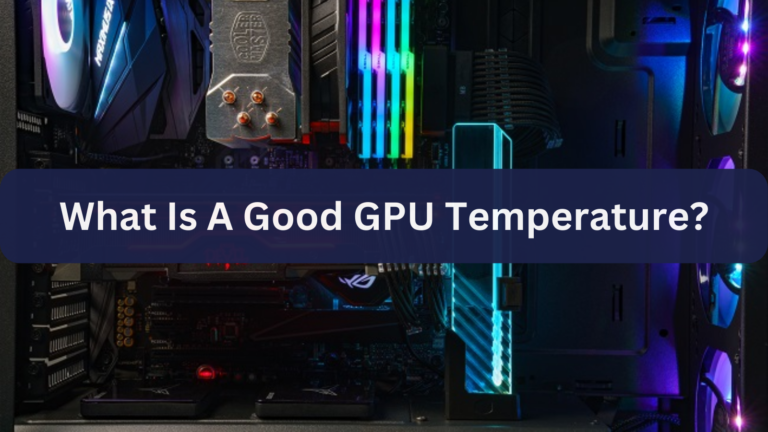Is 80 Degrees Celsius Hot For A GPU? Ultimate Guide – 2024
Although 80°C is at the higher end of the standard range, this temperature is usually safe for a GPU that is under extreme strain. GPU temperatures should ideally stay between 65°C and 75°C to maximize durability and efficiency. Appropriate cooling can lead to temperature stability.
We’ll go into great detail in this extensive post about what influences GPU temperatures if 80°C is a safe temperature for your GPU, and effective temperature management and monitoring. We’ll also talk about the possible effects of high temperatures and offer advice on how to keep your GPU cool.
Understanding GPU Temperatures: What’s Normal and What’s Not?
Before discussing whether 80°C is hot, it’s critical to comprehend the typical temperature ranges for GPUs. The manufacture and model of a GPU, the amount of usage, the cooling method, and the surrounding temperature all affect how hot it operates.
1. What Are Normal GPU Temperatures?
Idle Temperatures:
In idle mode, or when it’s not doing heavy lifting, a GPU usually runs between 30°C and 50°C (86°F and 122°F). Anything falling inside this range is regarded as typical.
Gaming or Load Temperatures:
Normal temperatures for the GPU are typically between 65°C and 85°C (149°F and 185°F) while it is under load, such as when playing games or rendering videos.
2. Why Do GPUs Get Hot?
GPUs produce heat while rendering graphics and carrying out intricate computations. while the GPU is under higher stress—like while playing a graphically demanding game—it draws more power and generates more heat.
The majority of contemporary GPUs are made to function securely within predetermined temperature ranges, which are established by the makers to guarantee consistent performance.
Is 80 Degrees Celsius Hot for a GPU?
To put it briefly, while 80°C is on the higher end of the typical temperature range, it is not thought to be excessively hot for a GPU. For optimal performance and endurance, you should try to keep your GPU temperatures between 65°C and 75°C, even though this range is normally safe. Let’s examine what 80°C on a GPU entails in detail:
1. Why 80°C Is Safe, But Not Ideal
Many GPUs are built to withstand temperatures as high as 90°C or even 100°C without experiencing any immediate harm. This is especially true of high-performance versions like those made by NVIDIA and AMD.
Nevertheless, operating at such high temperatures for extended periods of time may cause thermal throttling, in which the GPU reduces performance to avoid overheating, and may also limit the GPU’s lifespan.
2. Impact of Prolonged Operation at 80°C
Thermal Throttling:
Performance may suffer as a result of the GPU lowering its clock speed to produce less heat at higher temperatures.
Increased Wear and Tear:
Extended exposure to high temperatures might cause the materials in the GPU to deteriorate, resulting in an earlier failure or a shorter lifespan.
System Instability:
High temperatures have the potential to produce graphical abnormalities, crashes, and unstable systems.
3. When 80°C Becomes a Concern
If your GPU routinely reaches 80°C or over, especially when performing tasks that shouldn’t be very taxing, it could be a sign of problems with airflow, cooling, or thermal paste degradation.
Factors That Affect GPU Temperatures
GPU temperatures can be influenced by various variables. Gaining an understanding of these factors will enable you to better control and preserve the thermal performance of your GPU.
1. Ambient Temperature
GPU temps are directly impacted by the temperature of the space where your computer is kept. Because there is less effective heat dissipation in higher ambient temperatures, GPU temperatures rise accordingly.
2. GPU Model and Design
The architectures of GPUs vary among them. Naturally, higher-end GPUs with greater transistor counts and power consumption also generate more heat. Furthermore, custom designs from third-party manufacturers may have a cooling system different from that of reference GPUs, which are built directly by AMD or NVIDIA.
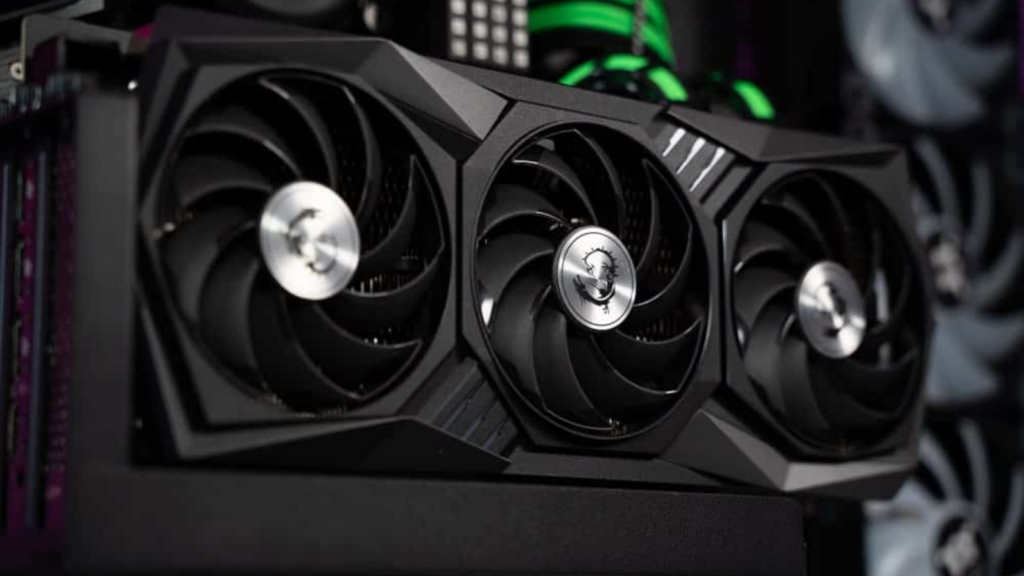
3. Cooling Solutions
The kind and caliber of the cooling solution are important factors in keeping GPU temperatures constant. GPUs are packaged with several cooling options, including:
Air Cooling:
Heat is dispersed away from the GPU by fans and heatsinks.
Liquid Cooling:
By absorbing heat more effectively, a liquid cooling loop keeps temperatures lower.
Hybrid Cooling:
Integrates liquid and air cooling to improve thermal performance.
4. Case Airflow
Higher GPU temperatures might be caused by heat buildup inside your PC case due to inadequate airflow. To enable appropriate airflow, make sure your case has enough intake and exhaust fans.
5. Workload and Application
GPU temperatures are influenced by the type of workload, which includes computing algorithms, gaming, and video rendering. Tasks with greater difficulty produce more heat.
6. Overclocking
Overclocking raises the clock speeds and power consumption of the GPU, which produces additional heat. Although performance can be increased through overclocking, increased cooling is frequently needed to maintain temperatures within a safe range.
7. Dust and Maintenance
Dust buildup on the GPU’s fans and heatsink might impede airflow, raising the temperature. Frequent cleaning can stop this problem.
The Impact of High GPU Temperatures
Although most GPUs can operate safely around 80°C, frequent high heat can cause a number of problems. Being aware of these possible issues will enable you to maintain ideal temperatures by being proactive.
1. Thermal Throttling
When the GPU lowers its clock speed to lower its temperature, thermal throttling takes place. Performance suffers as a result, which may have an impact on rendering times or your game experience.
2. Shortened GPU Lifespan
Elevated temperatures hasten the deterioration of electronic parts. This may eventually result in malfunctions or decreased performance, shortening the life of your GPU.
3. System Instability
Graphics abnormalities, crashes, and freezes can result from a GPU overheating. To avoid damage, in severe circumstances, it can even force your computer to shut down.
4. Potential Damage to Other Components
Elevated GPU temperatures have the potential to elevate the ambient temperature within your PC casing, thereby impacting other constituents like the CPU, motherboard, and storage units.
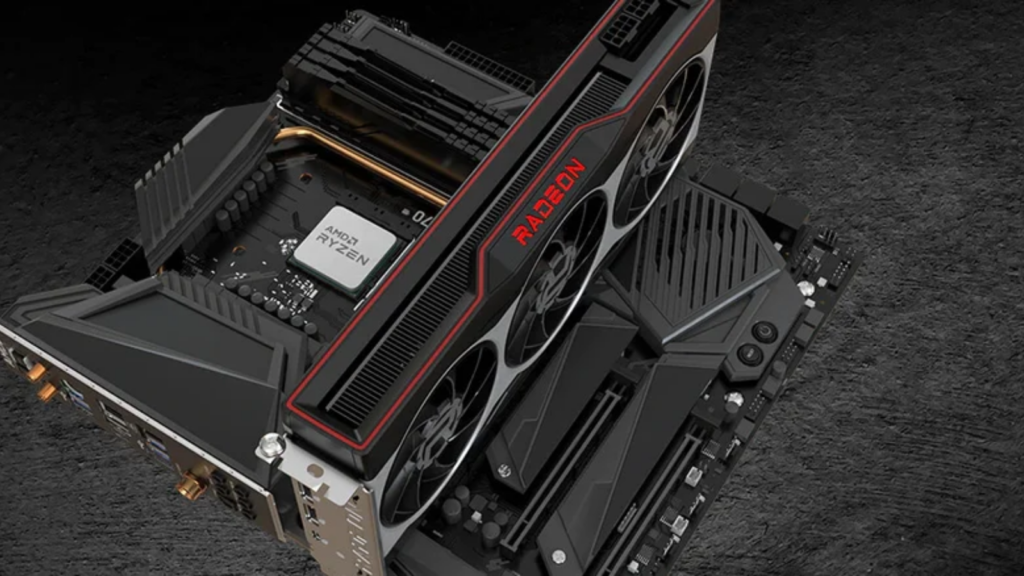
How to Monitor GPU Temperatures
It is essential to keep an eye on the temperature of your GPU in order to preserve its health and efficiency. Fortunately, monitoring GPU temperatures is possible with a number of available programs.
1. Software Tools
MSI Afterburner:
A widely used tool for tracking clock speeds, GPU temperatures, and other parameters.
GPU-Z:
Gives current data on the load, temperature, and fan speed of the GPU.
HWMonitor:
Keeps track of the GPU’s and other components’ temperatures.
NVIDIA GeForce Experience:
GeForce Experience allows NVIDIA users to keep an eye on temperature.
AMD Radeon Software:
The Radeon Software is available to AMD users for temperature monitoring.
2. In-Game Monitoring
GPU temperatures are one of the performance measures that certain games have integrated in. This lets you keep an eye on the temperature while you’re playing.
3. BIOS and UEFI
With certain motherboards, you can check the GPU temperature straight through the BIOS/UEFI interface.
How to Lower GPU Temperatures
You can take a few actions to lower temperatures and boost performance if you discover that your GPU is routinely operating at 80°C or above.
1. Improve Case Airflow
Make sure there is adequate airflow in your PC casing. To encourage air circulation and remove hot air from the case, add intake and exhaust fans.
2. Clean the GPU and Case
An accumulation of dust can impede airflow and lower cooling effectiveness. To avoid dust accumulation, clean the GPU’s case, heatsink, and fans on a regular basis.
3. Reapply Thermal Paste
Your GPU’s thermal paste may deteriorate over time, decreasing its efficacy. Enhancing heat transfer between the GPU die and the heatsink can be accomplished by reapplying thermal paste.
4. Undervolting the GPU
By lowering the voltage applied to the GPU, undervolting lowers heat without noticeably affecting performance.
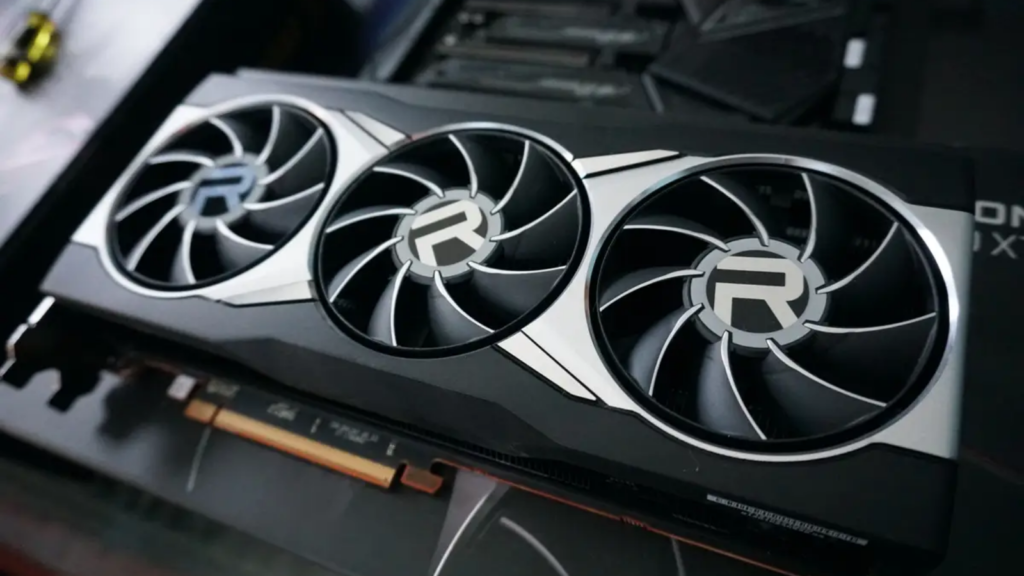
5. Upgrade the Cooling Solution
Upgrade to a more effective cooling solution by utilizing a better GPU heatsink, installing more fans, or converting to liquid cooling.
6. Lower In-Game Settings
Try decreasing the graphical settings or frame rate limit to lessen the strain on your GPU if the temperature of your GPU doesn’t go down while you’re gaming.
Ideal GPU Temperature Ranges for Popular GPU Models
Different GPU models have different maximum temperatures. Sustaining optimal performance can be achieved by being aware of the recommended temperature ranges for your particular GPU.
| GPU Model | Ideal Temperature Range (Under Load) | Maximum Safe Temperature |
| NVIDIA RTX 3080 | 65°C – 75°C | 93°C |
| NVIDIA GTX 1080 | 70°C – 80°C | 91°C |
| AMD RX 6800 XT | 65°C – 75°C | 110°C |
| AMD RX 5700 XT | 70°C – 80°C | 100°C |
| NVIDIA RTX 2080 Ti | 65°C – 75°C | 89°C |
Frequently Asked Questions (FAQs)
Q.1 Is 80 degrees Celsius too hot for a GPU while gaming?
While it’s on the higher end of the typical range, 80°C is thought to be safe for most GPUs during gaming. Try to maintain a temperature range of 65°C to 75°C.
Q.2 Can high GPU temperatures cause damage?
Indeed, extended exposure to high temperatures can cause thermal throttling, which reduces GPU lifespan and performance.
Q.3 How can I prevent my GPU from overheating?
Make sure your case has enough airflow, wipe the dust frequently, use high-grade thermal paste, and think about replacing your cooling solution.
Q.4 What is the maximum safe temperature for GPUs?
Depending on the model, the majority of contemporary GPUs have a maximum safe temperature of 90°C to 110°C. For more information, see the specs provided by the manufacturer of your GPU.
Q.5 How often should I monitor GPU temperatures?
Monitoring GPU temperatures is a useful idea whenever you make system modifications, like overclocking, or when you experience instability or performance lags.
Conclusion
In summary, while 80°C is generally safe, it’s not optimal for extended periods of time. This is the response to the query, “Is a GPU Hot at 80 Degrees Celsius?” Longevity and good performance can be ensured by keeping your GPU’s temperature within a safer range of 65°C to 75°C. Maintaining the functionality of your hardware can be made easier by being aware of the variables that affect GPU temperatures and knowing how to manage them.
Maintaining your GPU at safe temperatures is possible if you adhere to best practices, which include increasing airflow, using premium cooling solutions, and cleaning your system on a regular basis. Please don’t hesitate to contact us for additional individualized guidance if you have any more queries or specific worries about the temps of your GPU.
